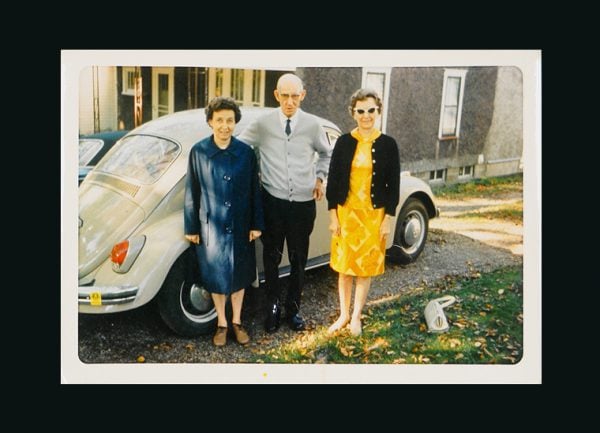Please see our updated blog post on this topic for the most up-to-date information.

How to Document Your Old Photographs
This blog post outlines best practices for safely writing on photographs and archival sleeves and storage enclosures. Documenting your personal photos is an important step in preserving your family’s history.
You may want to label some of your photographs with names, dates, and locations. Using the wrong writing implement can permanently damage old photographs and other items in your collection.

Never use standard permanent markers, cheap pens, highlighters, and such when marking your materials. If you’d like to mark your photographs, negatives, polypropylene or polyester sleeves, family artifacts, or collectibles, use the right type of pencil or marker.
The Ever Useful #2 Pencil
Professional archivists use a #2 pencil on the back of photographic prints that are fiber-based (the back feels like regular paper). This refers to photographs printed on uncoated fiber-based photographic paper and not the newer plastic- or resin-coated types of photo paper you typically find in more contemporary family photo archives. You can tell a resin-coated paper by the slick, glossy feel of the paper. #2 pencils don’t work well on this plastic surface, but a softer 4B or 6B graphite pencil will.

There are two main reasons why archivists recommend using a regular #2 pencil. It is reversible—it can usually be easily erased. Pen and marker ink is not reversible—it can’t be erased or undone.
Graphite is also relatively inert, with none of the oily gunk that makes up the ink in many types of pens. Pen ink often includes oils, solvents, and other non-archival components. Inks can bleed, smear, contaminate the image you’re writing on, and transfer onto whatever else is in contact with it.
Even when using a safe #2 pencil there are some guidelines to follow. Always work on a clean, hard surface and apply a light touch when writing to avoid “pressure transfer,” which may cause whatever you are writing to be visible on the image side. It is also best to write near the edges of your images—not in the middle—just to be safe!
Write on Labels, Not Your Photos

There are many ways to label the who, what, when, and where of your photographs without writing on the actual photos.

A number of our photo kits come with either acid-free All Purpose Index Cards and/or with acid-free 4 x 6 Archive Envelopes, and each offers you space to safely write whatever information you need using pencil or archival markers.
When writing on envelopes, sleeves, or other enclosures, always write your information before you place your photographs or artifacts in the envelope or enclosure. This will help prevent “pressure transfer” of whatever you’re writing from possibly damaging your contents.

The same holds true for acid-free File Folders, Negative File Folders, and all of the different types of sleeves and other enclosures you can use to archivally store your collection of photographs, negatives, and paper ephemera.
So, there you have it—many ways you can safely write on your photographs, snapshots, sleeves, and enclosures in your collection or archive!
And if you have still have any questions, please don’t hesitate to contact us. We’re always here to answer your archival questions!
Blog updated: 9/11/2023
